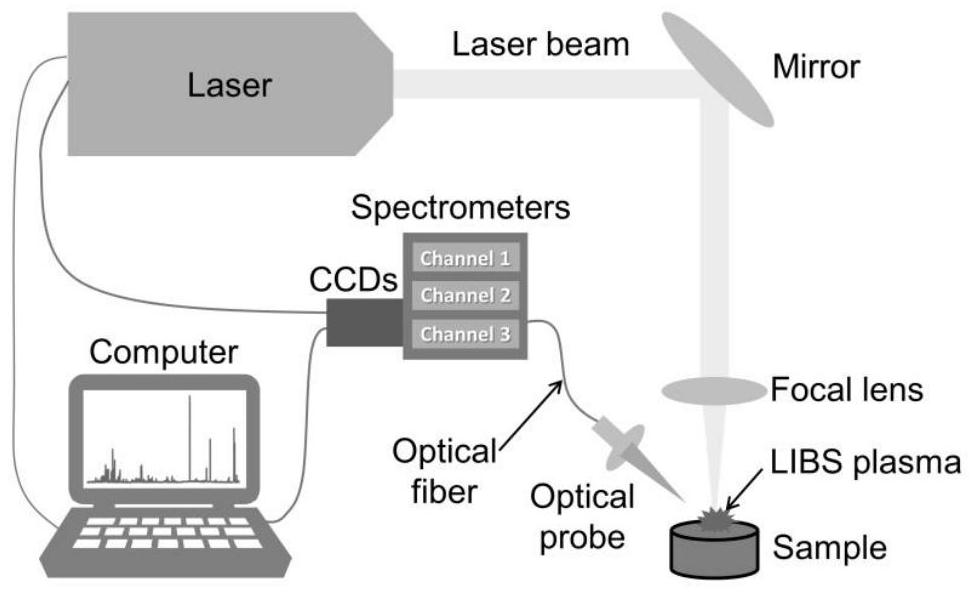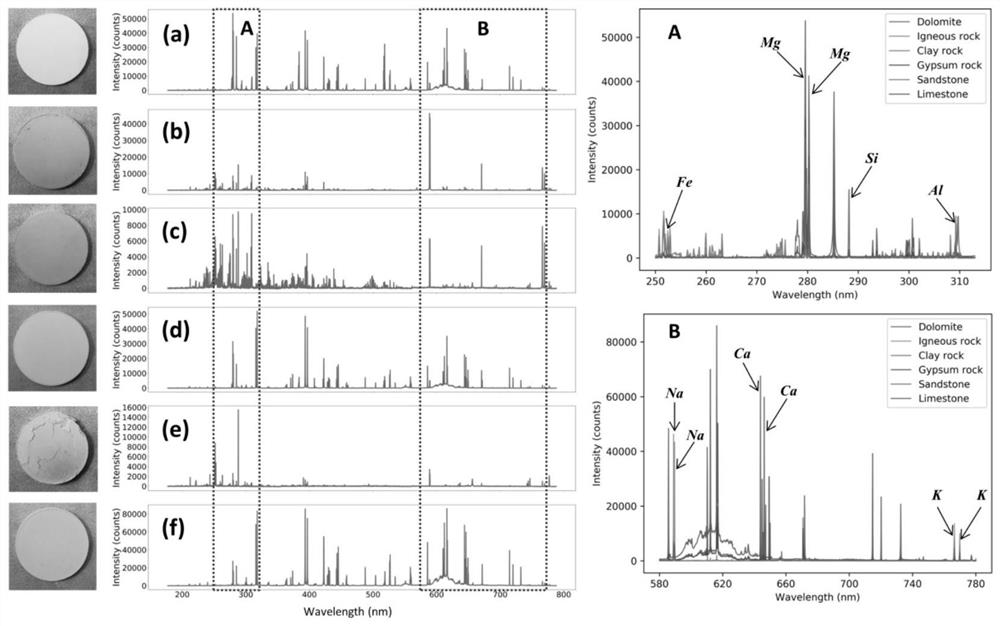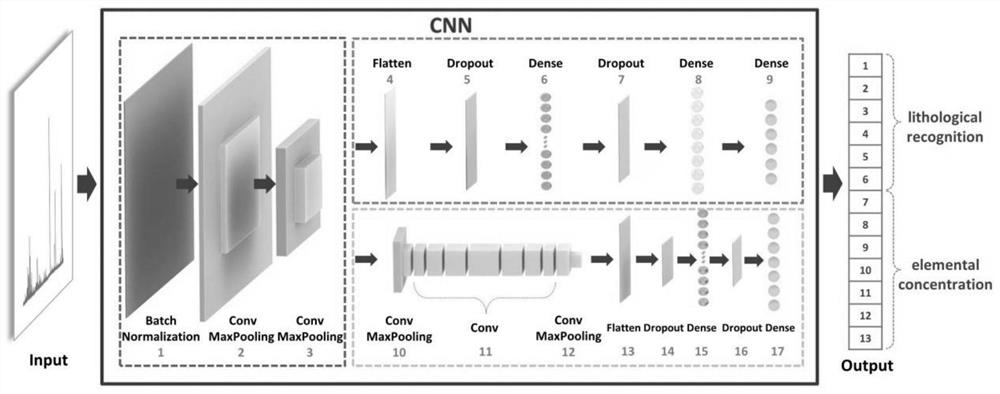Lithology classification and major element content detection method combined with libs and deep learning
A technology of element content and detection method, which is applied in the field of rock detection, can solve the problems of inability to realize lithology classification and major element content prediction, and achieve the effect of increasing training difficulty and simple experiment
- Summary
- Abstract
- Description
- Claims
- Application Information
AI Technical Summary
Problems solved by technology
Method used
Image
Examples
Embodiment 1
[0049] 1. LIBS system, rock samples and data collection
[0050] figure 1 A diagram of the LIBS experimental system employed in this example is shown. The experimental device belongs to the prior art, which includes a Nd:YAG laser beam with constant energy per pulse, focused on the surface of the target sample, and placed on top of the X-Y-Z translation sample stage. A fiber-optic probe was used to transfer the light emission of the laser plasma to a spectrometer, which consisted of three spectral channels covering 180–350 nm (channel 1), 350–580 nm (channel 2), and 580–790 nm (channel 3). Each channel has 2048 pixels, so each LIBS spectral data can be converted into a 3×2048 matrix. The relevant parameters of the LIBS experimental device are shown in Table 1.
[0051] Table 1 Main parameters of LIBS system
[0052]
[0053] In this example, the data used to form the training set, validation set and test set are collected from 97 rock samples, including dolomite (15), i...
experiment example 1
[0082] In this experimental example, the prediction ability of the CNN model constructed in Example 1 in terms of lithology identification is compared with three supervised machine learning models (KNN, SVM, PLS-DA) in the prior art. These three models belong to the prior art, and are obtained by training according to the method disclosed in the document Spectrochimica Acta Part B: Atomic Spectroscopy, 166 (2020) 105801.
[0083] The test set is used to evaluate the generalization ability of the above four models. Table 4 shows the prediction accuracy of lithology recognition of the four machine learning models on the test set, of which the CNN model of Example 1 shows the best prediction accuracy.
[0084] Table 4 Comparison of lithology identification and prediction accuracy of four machine learning models
[0085]
experiment example 2
[0087] This experimental example gives the confusion matrix of the CNN model constructed in Example 1 to predict the test set in lithology identification, and the results are as follows Figure 5 shown. From the results, only 4 spectra of dolomite are wrongly classified as limestone, which is because the two types of rocks are both carbonate rocks and have high spectral similarity.
[0088] As a comparison, Image 6 The confusion matrices of KNN, SVM and PLS-DA models established according to the method described in Experimental Example 1 are given. from Image 6 It can be seen that the error rate of the other three models for lithology identification is significantly higher than that of the CNN model in Example 1. This shows that the CNN model of Example 1 has a very high accuracy.
PUM
 Login to View More
Login to View More Abstract
Description
Claims
Application Information
 Login to View More
Login to View More - R&D
- Intellectual Property
- Life Sciences
- Materials
- Tech Scout
- Unparalleled Data Quality
- Higher Quality Content
- 60% Fewer Hallucinations
Browse by: Latest US Patents, China's latest patents, Technical Efficacy Thesaurus, Application Domain, Technology Topic, Popular Technical Reports.
© 2025 PatSnap. All rights reserved.Legal|Privacy policy|Modern Slavery Act Transparency Statement|Sitemap|About US| Contact US: help@patsnap.com



